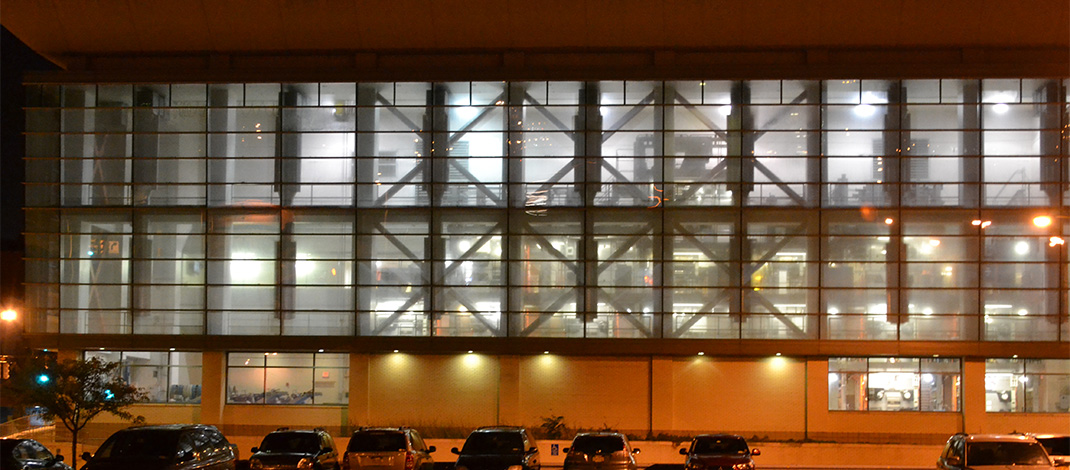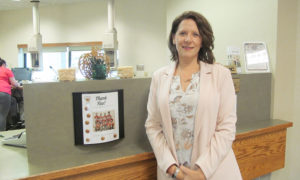By Ken Sturtz
Dan Valenti doesn’t imagine future generations will have the opportunity to stop the presses late for breaking news. But he did, even if he didn’t actually get to push a button that brought the presses to a screeching halt.
Valenti worked at The Post-Standard starting in 1975. He left in 1979, went on to a career as a writer and editor and now lives in Massachusetts. He worked on the copy desk and wire desk. In those days the Post-Standard and Herald-Journal shared a wire room. Machines churned out stories from the wire services on continuous sheets of paper.
One night in August 1977, Valenti was nearing the end of his shift, which was supposed to wrap up at 2 a.m. The newsroom was deserted save for him and the late-night city editor.
Suddenly bells began ringing in the wire room. Valenti walked in and saw a flash coming about the NYPD catching the Son of Sam killer. The initial story was short on information, but established that police had arrested a suspect and were confident he was the serial killer.
“And there was an incredible atmosphere of apprehension and tension,” Valenti said. “So, when the police got the guy that was a huge story.”
He tore the story off the machine and called to the other editor. He’d already made up his mind that they were going to stop whatever edition that was running and add the Son of Sam news. But the other editor had more experience and Valenti wanted to consult him. He agreed.
“I’m thinking about the newspaper films that I’ve seen and the dramatic scene comes where some incredible story happens and the grizzled editor picks up the phone and he says ‘Stop the presses,’” Valenti said. “I remember thinking ‘This might be the only time I get to say that.’”
He called the composing room and told them to stop the presses.

“And of course, that really went over big because their job is to get the physical papers out on time,” he said. “The trucks are backed into the garage; their motors are running and they’re ready to be loaded and all of a sudden they’ve got to interrupt the run.”
Valenti typed the story up as fast as he could. The production supervisor, visibly angry, came into the newsroom and stood nearby with his arms folded, glowering at Valenti.
Finally, the story was sent. A new plate was made for the front page and clamped onto the press rollers. The next day the Aug. 11, 1977, edition of The Post-Standard featured a story on the front page under the headline “Cops Say Suspect is Son of Sam.”
Bob Baker didn’t get to stop the presses during his career, but he had the distinction of actually starting at the newspaper as a copy boy, delivering copy back and forth to the composing room. He worked his way up to the obituary desk, then the copy desk and eventually a reporting job.
Baker remembers that when the old printing press was still in use he could feel the vibrations up in the newsroom, which wasn’t the case with the new press. Back then the first edition, known as the bulldog, went out around 8 p.m. Afterward the pressmen crossed the street to a bar and restaurant called N&H, Baker said. The workers would have a quick “lunch,” slugging down a couple beers before heading back to work, he said.
But it was an incident that happened when he was still fairly new that stands out in his memory and showed him the inherent tensions in the newspaper business.
Ronald Reagan was running for president in 1980 and at the Republican National Convention that summer there was widespread speculation that former president Gerald Ford would be Reagan’s running mate. Discussions fell apart at the last minute and news broke that George H.W. Bush was chosen as Reagan’s running mate.
An editor in the newsroom wanted to hold the first edition for the story. But the foreman of the composing room was determined not to hold the press, Baker said. Tensions quickly rose.
“They got ready to fight,” he said. “They were literally going to go to blows.”

Cooler heads prevailed and the story made it into the newspaper.
“It was something I had never seen,” Baker said. “That kind of standoff, one side saying we’re duty bound to get the paper off on time, the other saying we have to get it right.”
By the time Jenn Yackel came along technology was changing. She landed a digital imaging internship while at RIT. She went to work full time for the newspaper in 1995. She started as a digital imaging technician, then became an editor and finally an assistant production manager until leaving in 2002.
Yackel, of Marcellus, remembers the newspaper was switching to digital technology when she worked there, but the photographers still shot with film that had to be processed and scanned into the computer. The first digital camera, which cost $30,000, changed everything.
The last edition of the Herald-Journal used to be put to bed at 1 p.m. Once there was a small fire in Syracuse at 12:30 p.m., but Yackel and the assistant photo editor jumped in his car and sped off. They rushed back with photos in time for the 1 p.m. deadline.
“Before the digital camera we wouldn’t have made the deadline,” she said.
Toward the end of Yackel’s time at the newspaper she was responsible for quality control and was involved in transitioning from the old press. The new press ended up being faster and the quality much better.
But the transition was a bit of a nightmare because the two presses used vastly different technologies, different size paper and different inks. Things were complicated by the fact that for a while both presses needed to be operational. When the kinks were all worked out the new press began printing the entire newspaper.
“You can imagine how elated we were as we started to put ink on paper on that new press,” she said. “The press foreman operated this massive monster from a control panel that seemed like a scene from ‘Star Trek.’”




